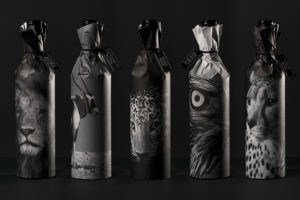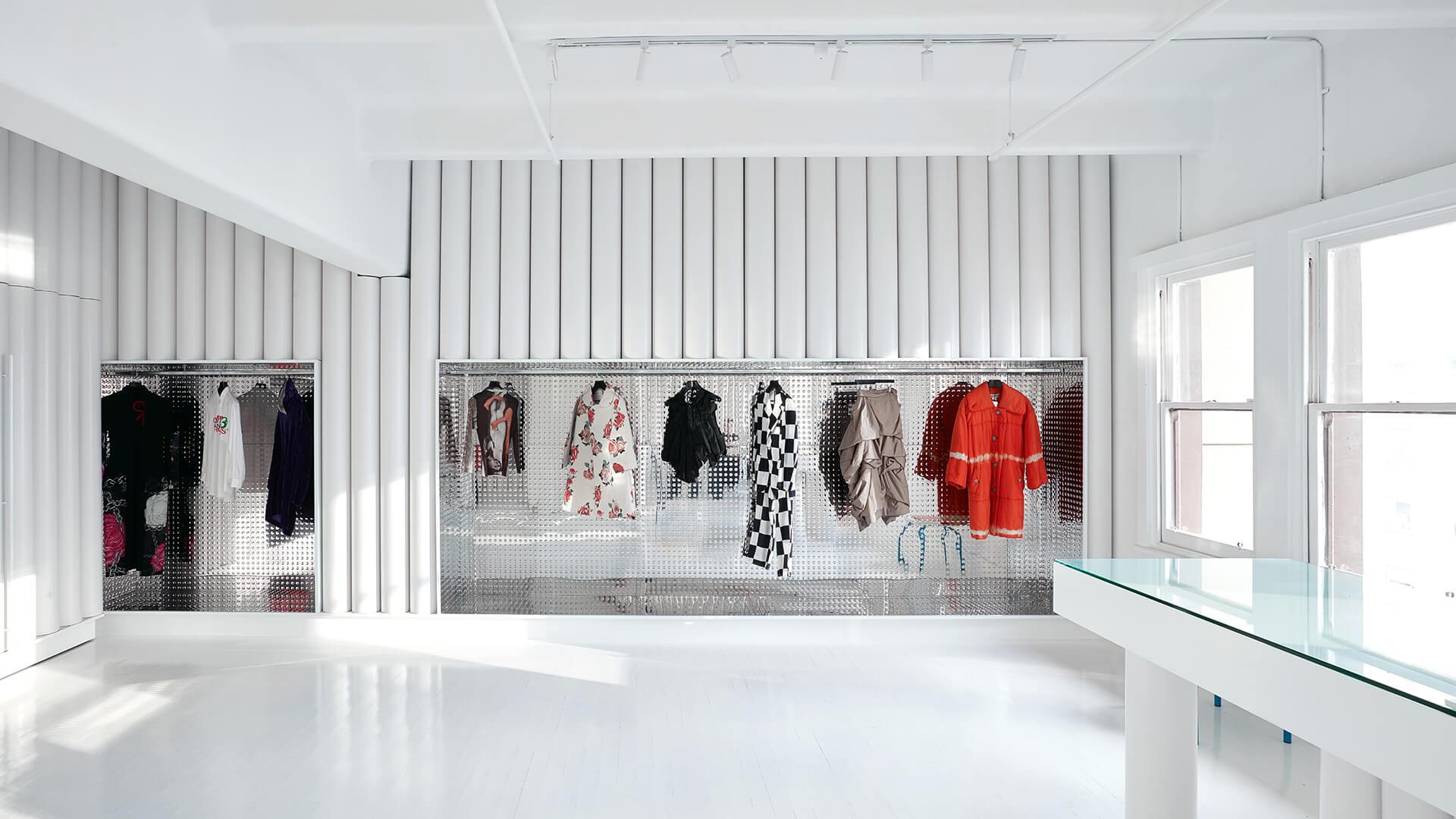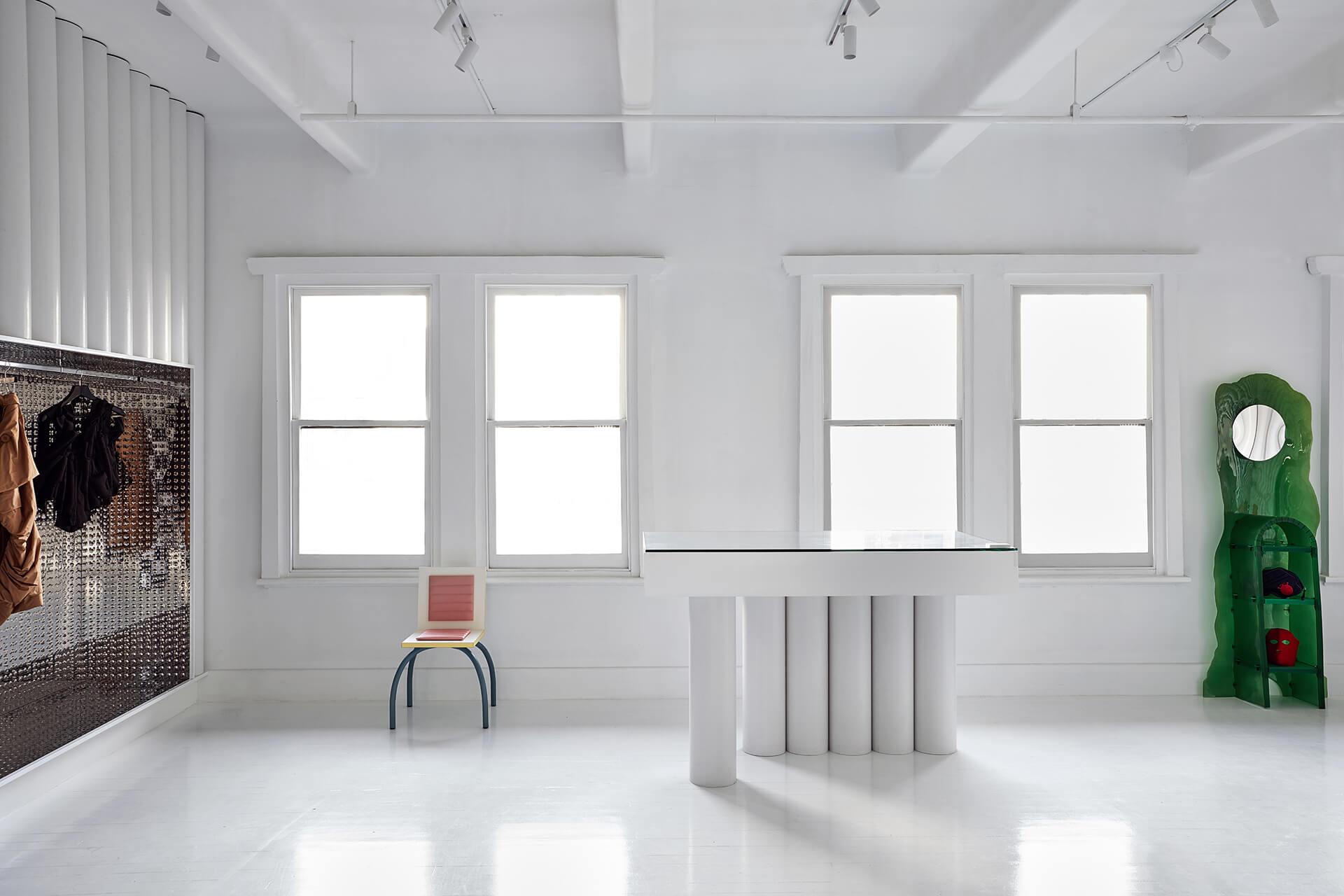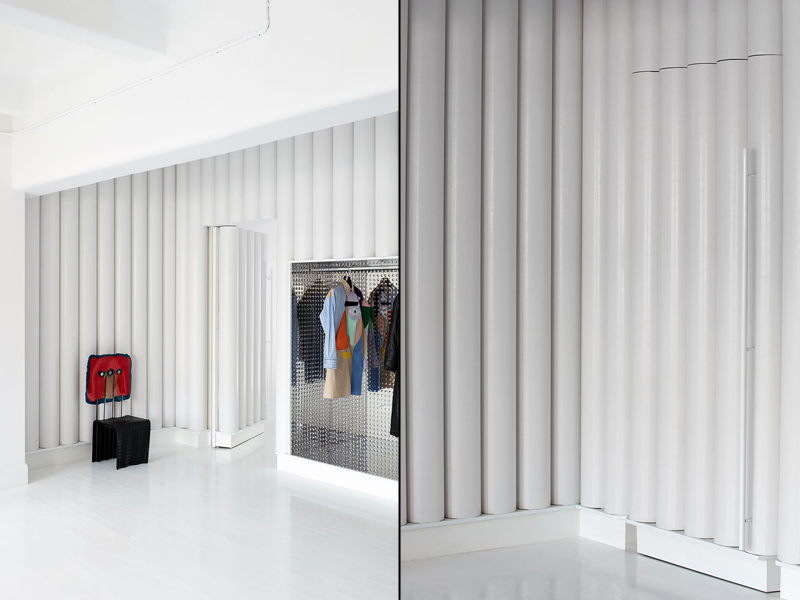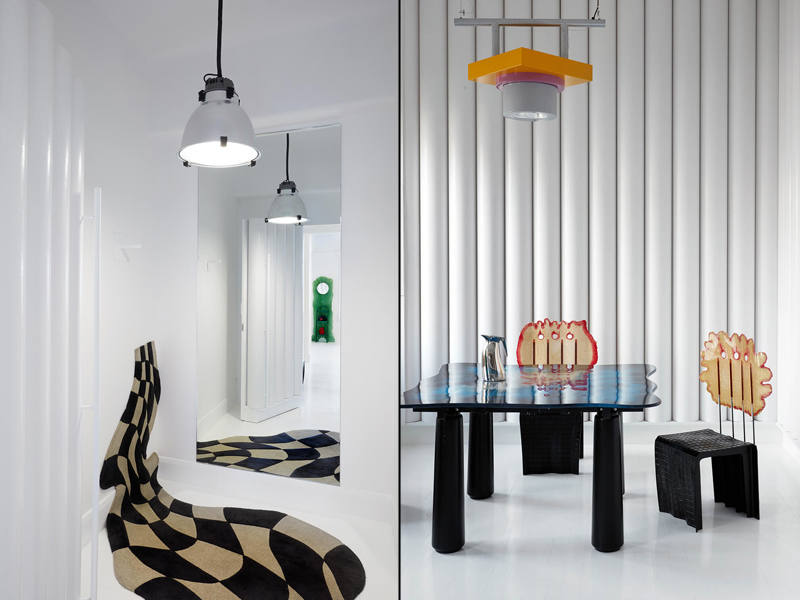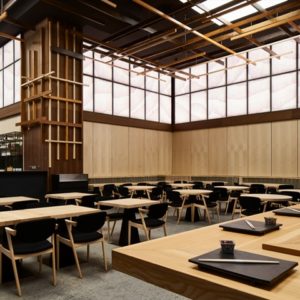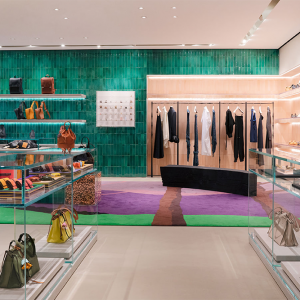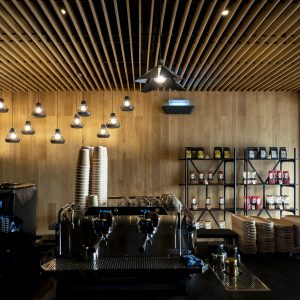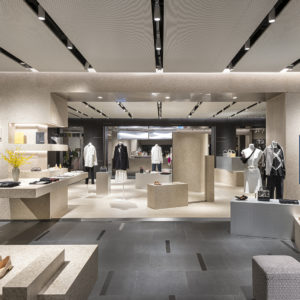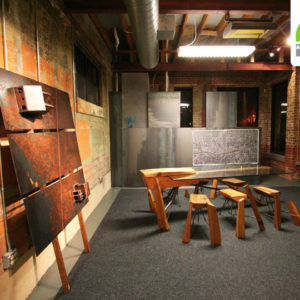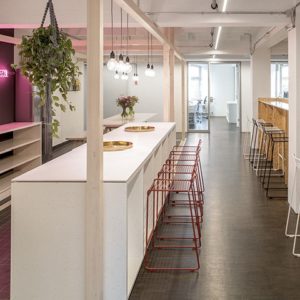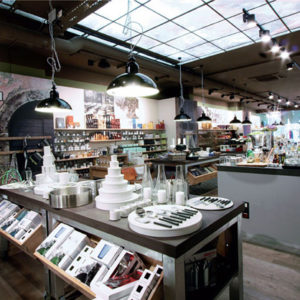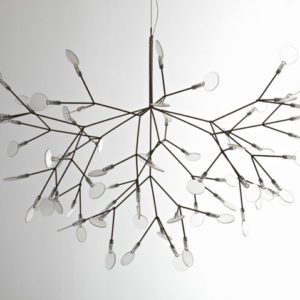
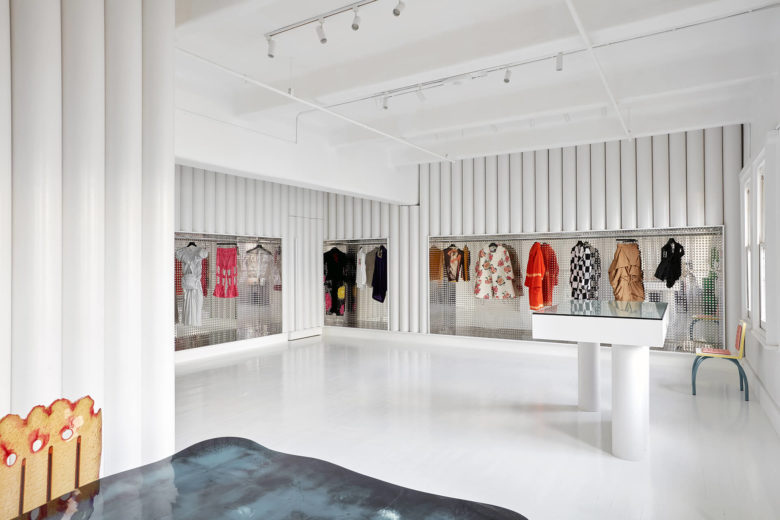
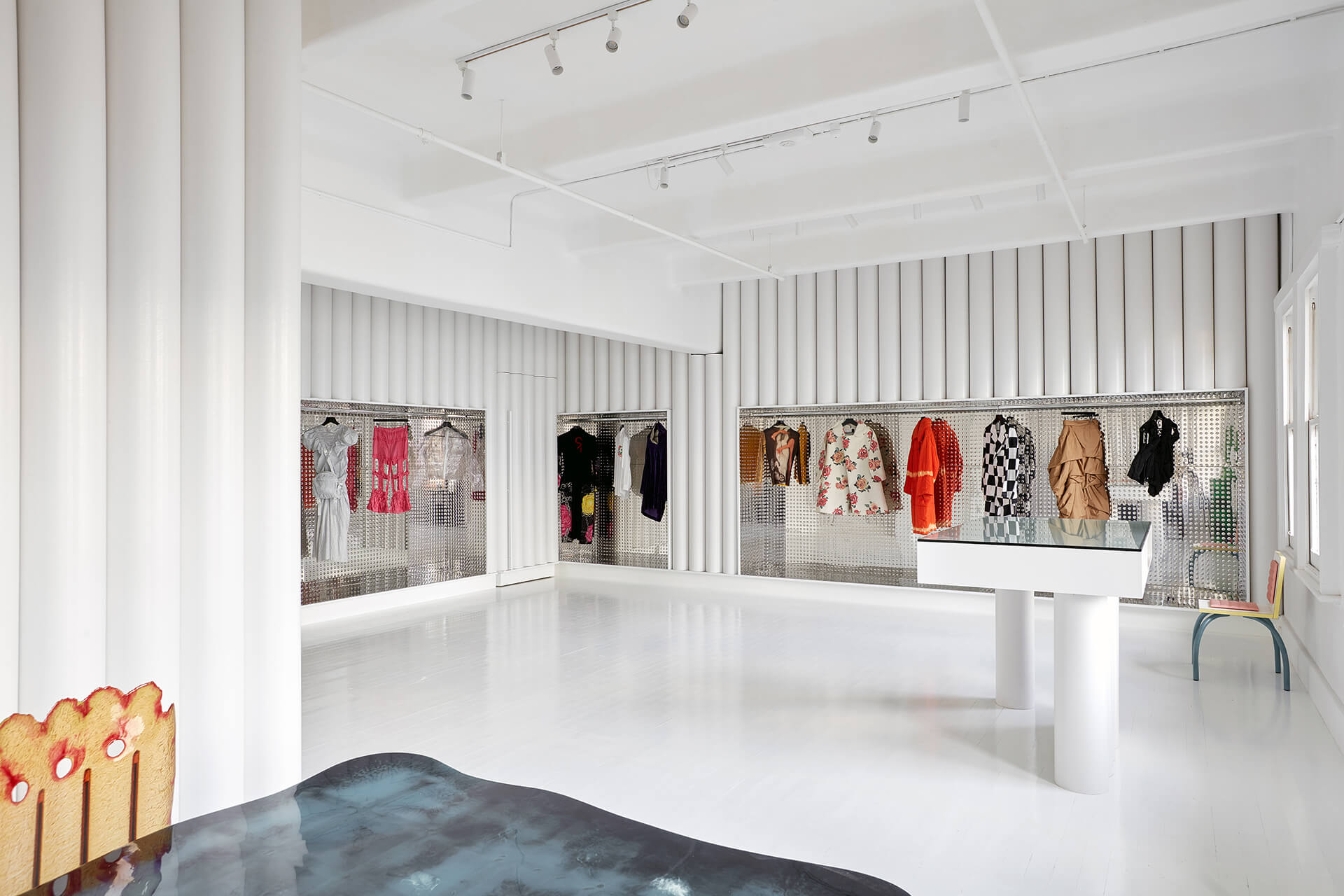
‘He was looking for a system to help order his collection – which at the time was bursting through the walls of a storage unit,’ said lead architect at Sibling studio Amelia Borg, regarding her client, fashion collector Octavius La Rosa. This bursting unit was being primed to move to La Rosa’s new shop, Dot Comme Collection. The retail space is located just one floor above his first one, in Melbourne’s Curtain House. It stores and displays archival fashions from cult brands such as Comme des Garçons, Walter Van Beirendonck and Yohji Yamamoto.
With the success of spaces such as Dot Comme, there is an undeniable impression that traditional retail is altering for the sake of the critically engaged consumer. Upon entering the noughties, denim connoisseurs – investigating the red seams of Japanese selvedge and seeking out bleu de travail jackets – introduced the mid-range consumer to the world of archival fashion. Second-life fashion not only provides buyers with a sense of researched knowledge, but also fairs well for the desire to be more sustainably conscious with one’s purchasing power. As the popularity of denim and workwear collecting has grown, the Generation Y and Z procurers unknowingly shifted the fate of fashion retail – for now, at least.
Suddenly, archival fashion is being recognized for its cultural revenue. A rise in fashion museums and exhibitions like that of Alexander McQueen: Savage Beauty at The Metropolitan Museum of Art in New York and the Victoria and Albert Museum in London, along with Dries Van Noten – Inspirations at Les Arts Décoratifs in Paris argued for the relevance of fashion in the institution. And as quickly as fashion has been brought into the traditional museum, the fashion archive has found new forums in Google’s We Wear Culture fashion platform, with Raf Simons and Fred Perry´s limited archive collection drop in vacuum-sealed packages, and the showcases at London’s Live Archives where exhibits role play as retail, allowing visitors to purchase the wearable goods.
Dot Comme Collection shares a similar sentiment to the latter, as it acts as a hybrid space. The interior takes references from Rei Kawakubo’s first shop for her Tokyo-born brand Comme des Garçons, where the collection was concealed in a backroom away from the customers. Here, the space displays a curated selection of hero pieces, while over 3,000 garments are stored meticulously behind an obscured door. The entire archive is available to view on Dot Comme’s online store – which visitors are welcome to scroll through, while sitting on Gaetano Pesce and Memphis Milano furniture. After selecting the items they would like to see, a door carved into the white, bulging walls allows employees to retrieve them.
‘It is unlike a standard retail concept, where there are multiple items of a style,’ Borg explained. ‘Each piece is curated for the space.’ Sibling studio took this as inspiration to inform the spatial design: starting with clean white walls, they played with texture and silhouette to honour the experimental methodology of the clothing housed within. Dot Comme Collection develops a precedent for the future of multi-disciplinary retail spaces – while retail is determining what those disciplines are.
Designed by Sibling studio
Photography by Sean Fennessy

